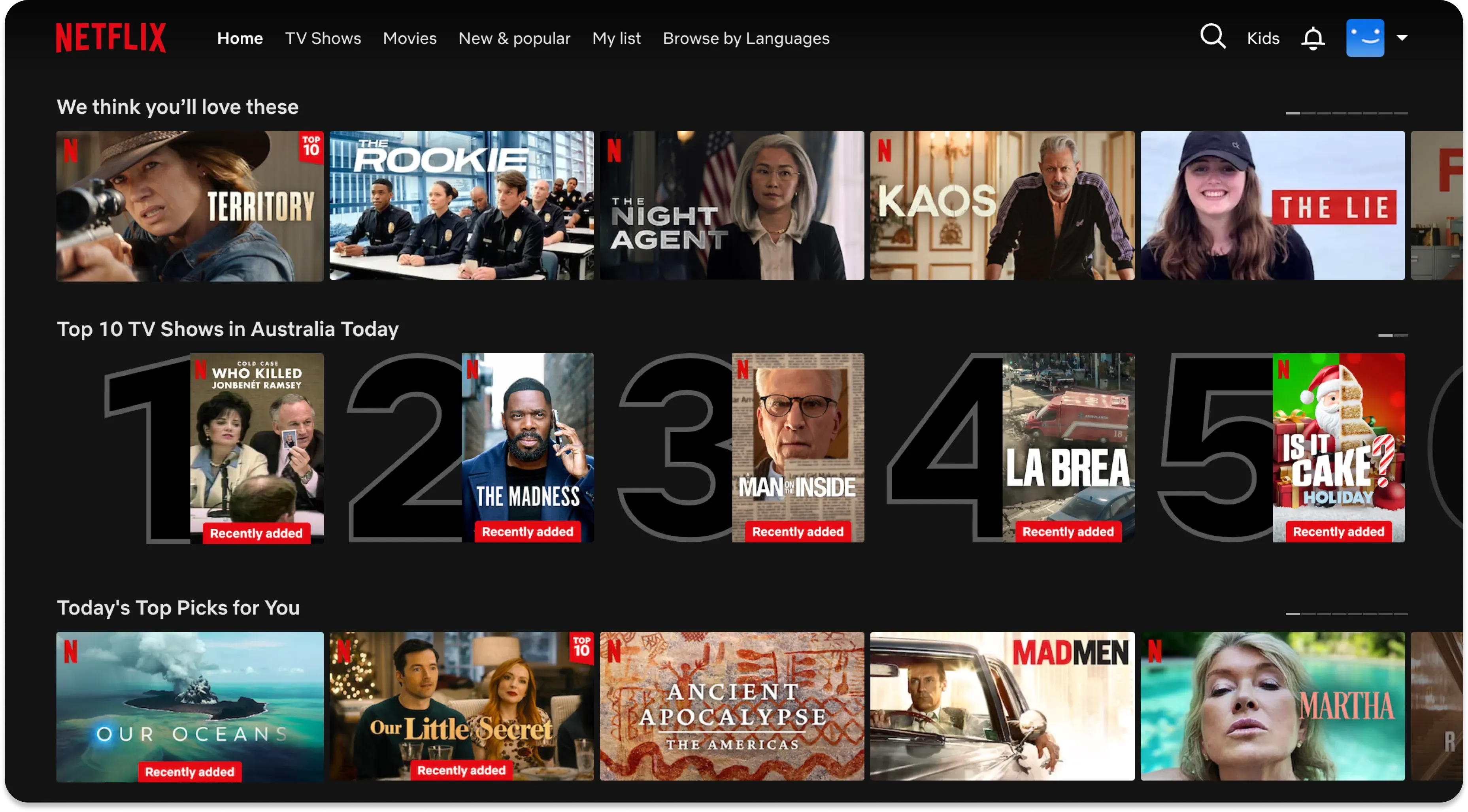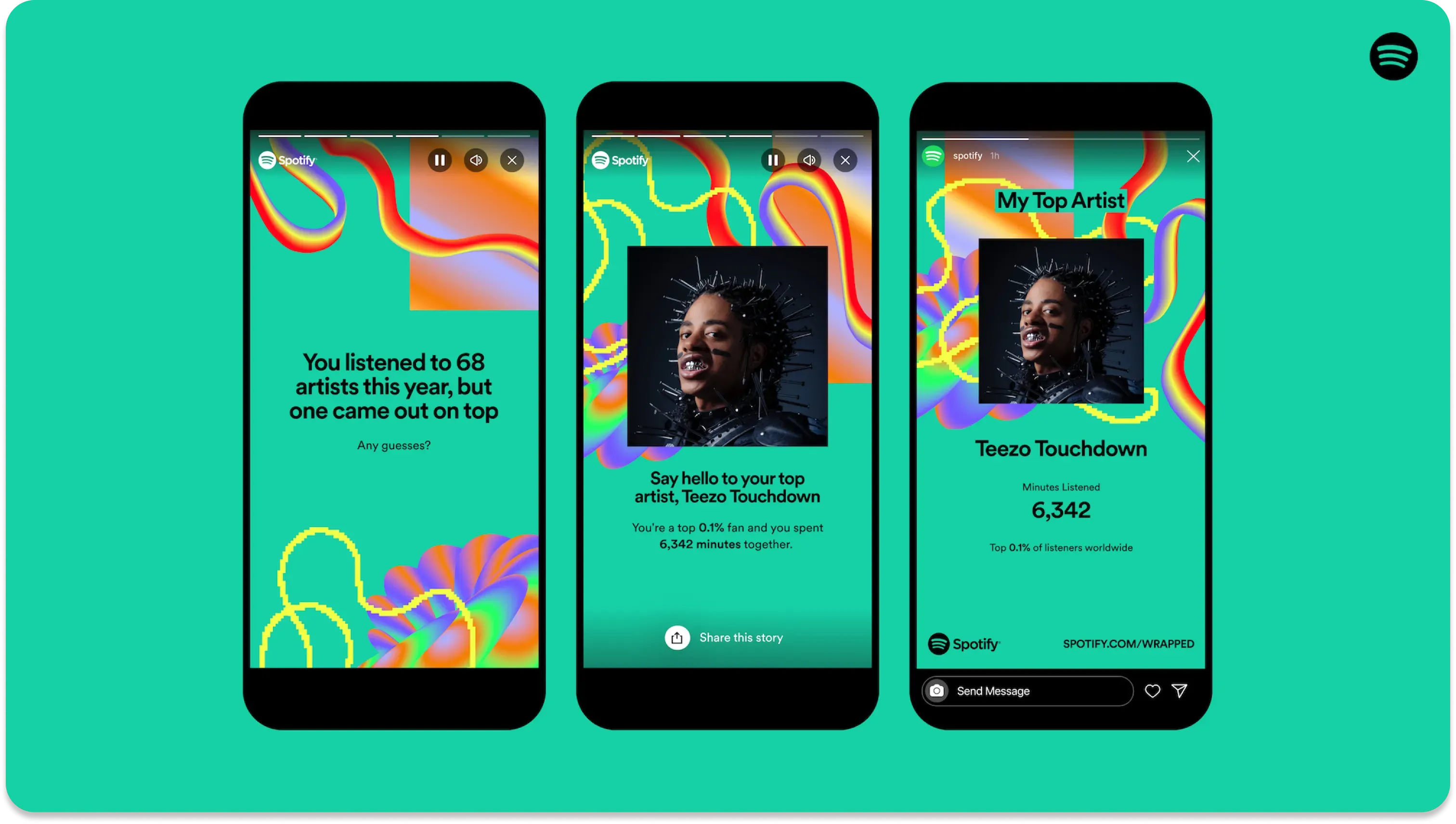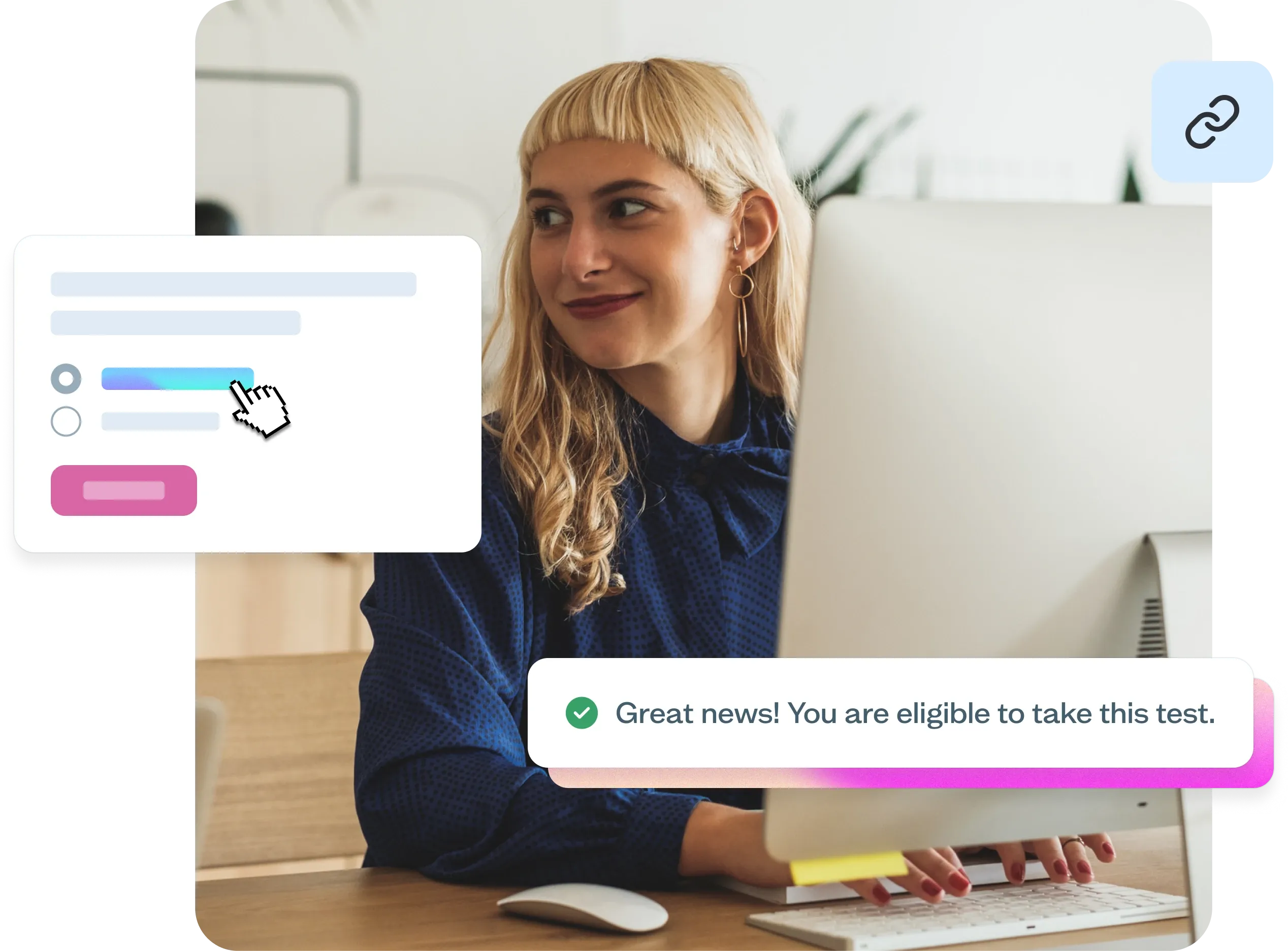23 Oct 2025
|16 min
Customer experience design
Learn how customer experience design creates seamless interactions across touchpoints, driving satisfaction, loyalty, and business growth.

Customer experience (CX) is about those thoughtful, memorable touches that make people feel special. We all know them. The ones you tell your partner, family, or friends about later that day. The warmth and surprise of feeling seen, understood, valued. Not just a consumer, a customer, a client.
The truth is, most businesses struggle to get this right. Or leave it as an afterthought. But (quite aside from it being ‘nice to be nice’) there are solid business reasons why you shouldn’t.
Not only would 74% of customers buy on experience alone, but it’s a key driver of the customer retention and loyalty that Harvard Business Review found makes 88% of customers buy again, and 62% stay loyal to that brand, almost exclusively.
So, it's an effort well worth making.
But, as Clare Muscutt (Founder of Women in CX) noted, “Building a good customer experience does not happen by accident. It happens by design.”
This article unpacks customer experience design, so you can start transforming those ordinary interactions into unforgettable ones. Creating those moments that keep your customers coming back for more. And more. And more.
Key takeaways
Customer experience design focuses on creating seamless interactions across all customer touchpoints.
CX design goes beyond usability; it considers the emotional experience and overall satisfaction of the customer.
Proper CX design can drive higher customer loyalty, satisfaction, and business growth.

What is customer experience design?
Customer experience (CX) design is about crafting how people perceive and engage with your brand across every online and offline interaction. It goes beyond providing smooth transactions – it’s about shaping feelings, building trust, and creating meaningful connections.
CX design covers everything from how a customer first encounters your brand, to their experiences navigating your website, to the support they receive post-purchase.
This holistic approach ensures each touchpoint – whether it’s a website visit, an in-store interaction, or a customer service call – feels connected and consistent, leaving a positive lasting impression on the user.
Unlock the secrets of exceptional CX design
Get real-time insights from 690,000+ participants and design experiences that turn customers into lifelong fans.
CX design vs UX design: Key differences
Customer experience (CX) design and user experience (UX) design are often confused, but knowing the difference can really sharpen your brand’s impact. Simply put, UX design is one part of the broader CX landscape just one (albeit very big) piece in the puzzle that often begins with a clear, well-structured ux design proposal.
While UX zeroes in on how users interact with specific products or services – like navigating a website – CX covers the entire journey, from first impressions to customer support.
Let’s demonstrate this with a closer look at these differences:

Scope
CX design: Covers the entire customer journey, from marketing to post-purchase support, and includes every interaction (e.g. phone calls, social media).
UX design: Focuses on how users interact with specific products or interfaces, such as a website or app essentially answering the question of what is user interface, and how it shapes the overall experience
Objectives
CX design: Aims to increase customer satisfaction across all digital and physical channels.
UX design: Seeks to improve usability and user engagement, often within digital products like apps or websites.
Metrics
CX design: Uses broader customer-focused metrics, like Net Promoter Score (NPS) and Customer Satisfaction (CSAT).
UX design: Relies on product-specific metrics, such as error rates, task completion times, and usability scores.
Emotional engagement vs efficiency
CX design: Focuses on creating a positive emotional connection with the brand, fostering loyalty.
UX design: Emphasizes minimizing frustration and making interactions with products efficient and intuitive.
Physical vs digital touch points
CX design: Encompasses every interaction with the brand, including physical stores, websites, and customer service.
UX design: Primarily deals with digital interfaces, ensuring experiences on websites or apps are smooth and enjoyable.

6 benefits of customer experience design
Investing in customer experience (CX) design is a smart, strategic move with the power to transform your business. Let’s explore six key benefits of creating a thoughtful, well-designed customer experience.

1. Improved customer satisfaction
Companies that improve customer experience are rewarded with a 33% increase in customer satisfaction. A well-designed CX creates smoother, more enjoyable journeys, leading to higher satisfaction and loyalty. For example, CX design prioritizes intuitive interfaces, clear information, and quick resolution channels. Happy customers are more likely to become repeat buyers, and are also more likely to share their positive experiences with others, growing your brand through word-of-mouth. Quite the virtuous circle.
2. Stronger brand loyalty
When every interaction (like customer support, website navigation, and post-purchase follow-up) is carefully designed to be engaging and helpful, customers are more likely to become repeat buyers and even advocates, promoting your brand to others. In fact, according to Gartner, CX drives over two-thirds of customer loyalty, outperforming brand and price combined. This kind of loyalty isn’t built overnight but can lead to long-term business growth.
3. Better customer retention
Retaining customers is always more cost-effective than acquiring new ones (between 5 and 25 times cheaper, depending on which report you read). With a focus on good CX design, you can reduce churn by anticipating customer needs, solving issues quickly, and keeping them engaged throughout their journey with your brand.
4. Higher conversion rates and sales
CX design makes sure that the user journey is as frictionless as possible, making it easier for customers to find and purchase products or services. A carefully designed checkout process, clear calls-to-action, and effective product recommendations contribute to higher conversions. Happy customers are also more inclined to explore other products or services you offer – in fact, companies that improve customer experience can see a 32% increase in cross-selling and upselling.
5. Increased customer lifetime value
Through a well-designed, seamless experience across the entire customer lifecycle, CX design encourages repeat purchases, higher spending, and greater loyalty, increasing each customer’s overall value to your brand.
6. Enhanced brand perception and trust
CX design aligns your brand’s image with customer expectations, creating a consistent experience that builds trust. For example, a brand focused on simplicity and ease will design a streamlined user experience and clear communication that strengthens that perception. This reputation extends beyond just your product; it affects how people view your brand’s values, culture, and commitment to service.

8 customer experience design examples
Sometimes, the best way to understand good customer experience design is to see it in action. Here are eight real-world examples of how brands use CX design to create memorable experiences that delight their customers.
Apple: A seamless, connected experience

Apple is known for its exceptional customer experience, carefully crafted through thoughtful CX design across every touchpoint – from products to in-store experiences and customer support. Their CX design strategy creates a seamless journey, where each interaction feels connected and intuitive. From the moment you enter an Apple Store to the experience of using an iPhone, every element is intentionally designed to reinforce the Apple brand, making you feel valued and supported at each stage.
This one I know well.
I soaked my iPhone at a festival many years ago (don’t ask). When the old “dry it in a bowl of rice” didn’t work, I chanced my arm and brought it into the store. Walking up to their ‘Geniuses’ at the desk, I had my sob story and most pathetic face at the ready. It turns out I wouldn’t need either. Three minutes later, I positively floated out of that store: replacement phone in my hand; goofy smile on my face. And the fact that I’m still boring strangers with that story twelve years later speaks volumes.
Starbucks: A personalized rewards program

Starbucks goes the extra mile, too, with its Rewards program. By using insights from customer data, they customize their offers to each user’s preferences – so if you’ve been getting a taste for their iced caramel lattes, chances are you’ll likely see personalized discounts for them in your app.
This approach showcases CX design by creating a sense of connection and value, increasing both customer retention and engagement, and demonstrating how intentional design enhances loyalty.
Amazon: A frictionless buying experience

Amazon’s streamlined purchasing process is a good example of intentional CX design. Features like one-click purchasing, personalized recommendations, and fast delivery options are all designed to remove friction and make the buying process as frictionless as possible. This well-designed user journey not only keeps customers making purchases but also encourages repeat business.
Zappos: A customer-first approach
Zappos has earned a reputation for outstanding customer service, driven by thoughtful CX design. Their approach focuses on making customer interactions positive and memorable at every touchpoint, from offering free shipping to surprising customers with overnight deliveries. By designing these experiences to exceed expectations, Zappos creates loyalty and turns one-time shoppers into repeat custoemrs. This is a great example of how a strong CX design can foster brand loyalty.
Netflix: Personalized recommendations

Netflix uses powerful algorithms to tailor recommendations to individual users. This focus on personalization is a key element of Netflix’s CX design, crafting a tailored experience that enhances engagement and satisfaction. By designing an experience that anticipates user preferences, Netflix not only boosts viewer retention but also strengthens its relationship with customers.
Disney: Magical customer experience design
Disney excels at creating immersive and magical experiences, both in its theme parks and through its digital channels. From seamless trip planning using the My Disney Experience app to personalized interactions throughout the customer journey, Disney’s CX design focuses on creating delightful moments at every touchpoint. This thoughtful approach to CX design creates deep emotional connections with customers and strengthens brand loyalty.
Warby Parker: An omni-channel experience

Warby Parker seamlessly blends online and in-store shopping experiences through thoughtful CX design. Whether customers are trying on glasses virtually, scheduling appointments, or visiting a store, the experience is designed to be cohesive and flexible. By focusing on a smooth, personalized journey, Warby Parker makes sure that customers can choose the path that works best for them. This intentional design approach helps the brand stand out by offering a frictionless and enjoyable experience across all touch points.
Spotify: Data-driven CX design

Spotify’s use of customer data to create personalized playlists, such as Discover Weekly or Wrapped, is a prime example of thoughtful CX design. By leveraging data about user preferences, Spotify creates tailored experiences that resonate with individual users. This level of personalization not only makes users feel understood, but creates deep engagement, turning casual listeners into loyal customers. This approach highlights the power of strategic CX design to build lasting relationships with users.
Designing the customer experience: The process
Creating an effective customer experience (CX) design involves understanding your customers' needs, then designing each touchpoint to meet those needs. Here’s a step-by-step guide to help you design a seamless CX.

1. Research and understand your customers
“You’ve got to start with the customer experience and work back with the technology, not the other way around.” - Steve Jobs.
Effective CX design starts with understanding your customers. Customer experience research starts with, who they are, what they expect, and what challenges they face. Use tools like surveys, customer interviews, and even a moderated usability test to gather feedback and observe how users interact with your product in real time. If you're conducting interviews, it’s essential to know how to analyze user interviews effectively to uncover insights that will help you design experiences that truly meet customer needs.
2. Map the customer journey
Next, map out the entire journey a customer takes with your brand. This should include every touchpoint, both digital and physical. From the moment they learn about your brand to after-sales support, each interaction plays a role in shaping their experience. A customer journey map helps you visualize this and spot any areas where improvements are needed.
3. Design for seamless interactions
At every touchpoint, interactions should be as smooth and enjoyable as possible. Whether it’s navigating a website, speaking with customer service, or completing a purchase, make sure the experience is intuitive and frustration-free. This means thinking about usability, UX accessibility, and clarity in each design decision.
4. Personalize the experience
Customers appreciate personalized experiences that make them feel valued. Use data to tailor interactions based on individual preferences, like product recommendations, emails, or customer support. This strengthens the emotional connection with your customers and encourages loyalty.
5. Test and refine your designs
After mapping the customer journey and designing touchpoints, test your designs. This can involve usability testing, gathering customer feedback, and even A/B testing to see how well your design works in real-world scenarios. Use the results to refine and improve the experience continuously.

How Lyssna can help
Lyssna helps you gather feedback quickly, so you can make decisions that improve each step of your customer journey.
Get real-time feedback in minutes: With access to over 690,000 participants using the Lyssna research panel, you can connect with your target audience in just minutes. If responses don’t meet your expectations, our satisfaction guarantee allows you to exchange them at no extra cost.
Easy to use and affordable: Lyssna’s simple interface makes it easy to set up studies, analyze results, and share insights with your team. With recruitment costs as low as $1 per minute, it’s one of the most budget-friendly options for in-depth research.
Valuable customer insights: Our CX & UX tools support both moderated and unmoderated ux studies, so you can explore customer behavior on every channel. Whether testing a new design, gathering product feedback, or refining marketing messages, Lyssna turns customer data into insights that drive real improvements.

The power of good customer experience design
"In a world where products and services are becoming more and more commoditized, customer experience is the only true differentiator." – Annette Franz, founder of CX Journey Inc.
How do you make your brand stand out? Customer experience design is a key differentiator that goes beyond simple transactions. As we’ve explored in this article, CX design encompasses every touchpoint in the customer journey – from first impressions to post-purchase support – and requires careful consideration to create meaningful, lasting connections.
The key to successful CX design lies in taking a customer-first approach. Start by truly understanding your customers through research and feedback, then map their entire journey to identify opportunities for enhancement. Focus on creating seamless, personalized experiences.
Remember, exceptional customer experiences don’t happen by chance; they’re the result of intentional design, continuous refinement, and a focus on putting customers at the heart.
And when your customers don’t just like your brand, they trust it and champion it, everything else, well, it just falls into place.
FAQs about customer experience design
Design exceptional customer experiences
Want to truly understand your customers? Lyssna provides access to quick, actionable feedback to help you craft memorable experiences that set your brand apart.
You may also like these articles


Try for free today
Join over 320,000+ marketers, designers, researchers, and product leaders who use Lyssna to make data-driven decisions.
No credit card required






